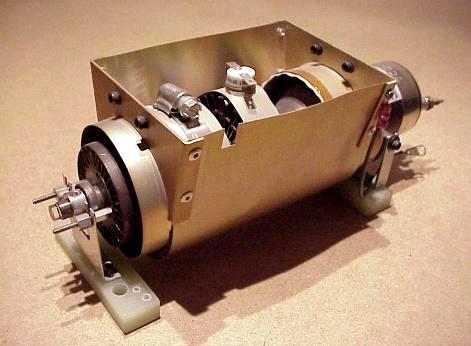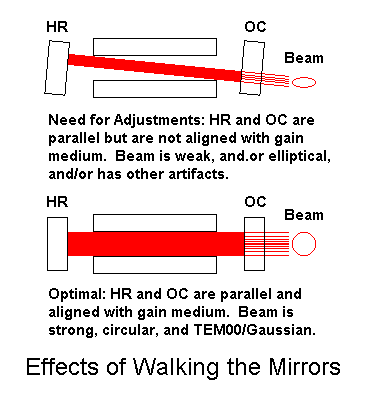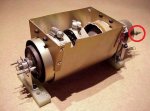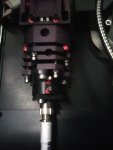- Joined
- May 29, 2013
- Messages
- 7
- Points
- 1
I have a JDSU Mod 2011 65ML argon laser I cadged from an NIH warehouse, but when run on light feedback mode, I can only get about 15-25mW multiline from the argon (varies which meter (Si/bolo) is reading it). It is in an older Leica confocal microscope I have pretty well resuscitated. The unit may have overheated (limit) on idle a couple times. The tube only has about 1500hours, but wondering if there is any thing I should do. I am a very poor lab rat researcher with sequestration. Its on a big fan, runs stable, just never increasing past 15mW at 7V on the 0.1V/mW regulation of pin 7. Starts fine, runs stable if not over 9V on pin 7.
Inside I has this style head, with a funny ring on the front end...

Questions:
1. Tweaking the JDSU laser unit head, like adjusting the mirrors/brewster prisms/screws. Anyway to do this safely? My beam seems to be coming out very angled, and low power. Will this increase optical power. The rear of the unit seems to just be a mirror.

2. I was advised to check the filament voltage..how to do this on a JDSU supply, I only see current and light output regulation?
3. Try another supply, I was advised sometimes the JDSU supplies die. Where to get another that will drive 65mW or more, on the cheap?. I guess it has to be fairly stable for confocal work...:thinking:
4. Turning the optical power pot, the light output increases rapidly..and then never goes farther..up to 7V on pin7. Does this tell you my problem?
Inside I has this style head, with a funny ring on the front end...

Questions:
1. Tweaking the JDSU laser unit head, like adjusting the mirrors/brewster prisms/screws. Anyway to do this safely? My beam seems to be coming out very angled, and low power. Will this increase optical power. The rear of the unit seems to just be a mirror.

2. I was advised to check the filament voltage..how to do this on a JDSU supply, I only see current and light output regulation?
3. Try another supply, I was advised sometimes the JDSU supplies die. Where to get another that will drive 65mW or more, on the cheap?. I guess it has to be fairly stable for confocal work...:thinking:
4. Turning the optical power pot, the light output increases rapidly..and then never goes farther..up to 7V on pin7. Does this tell you my problem?









